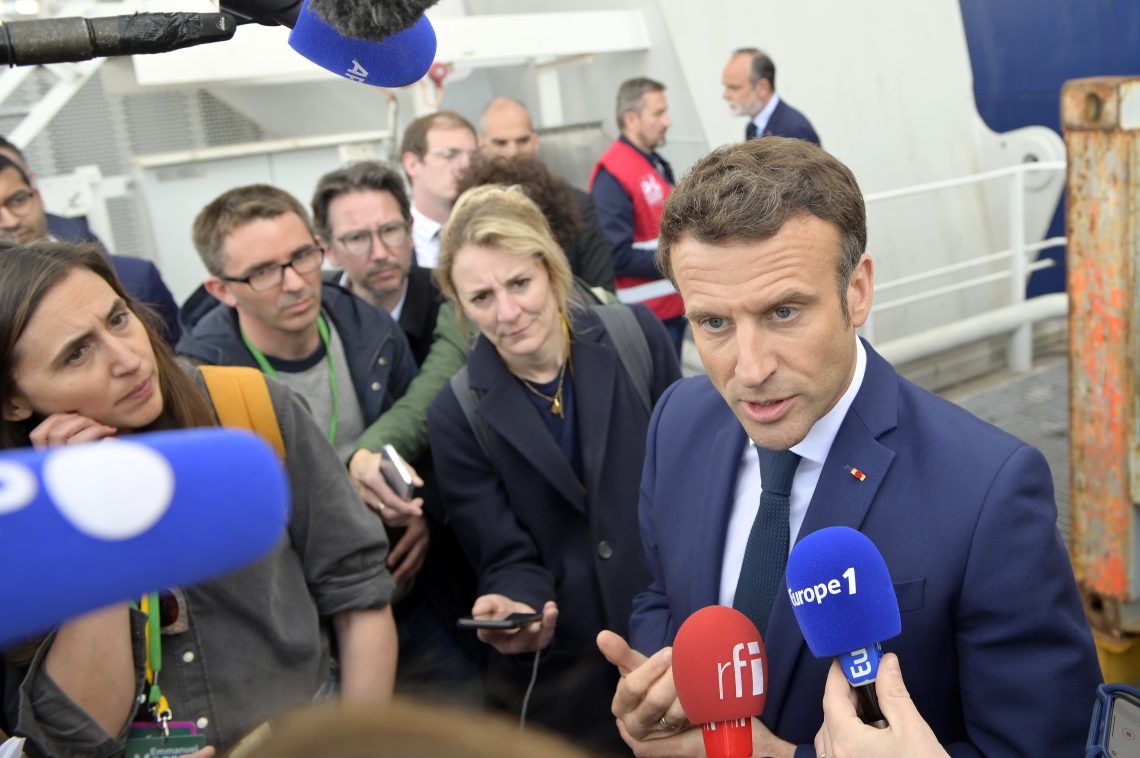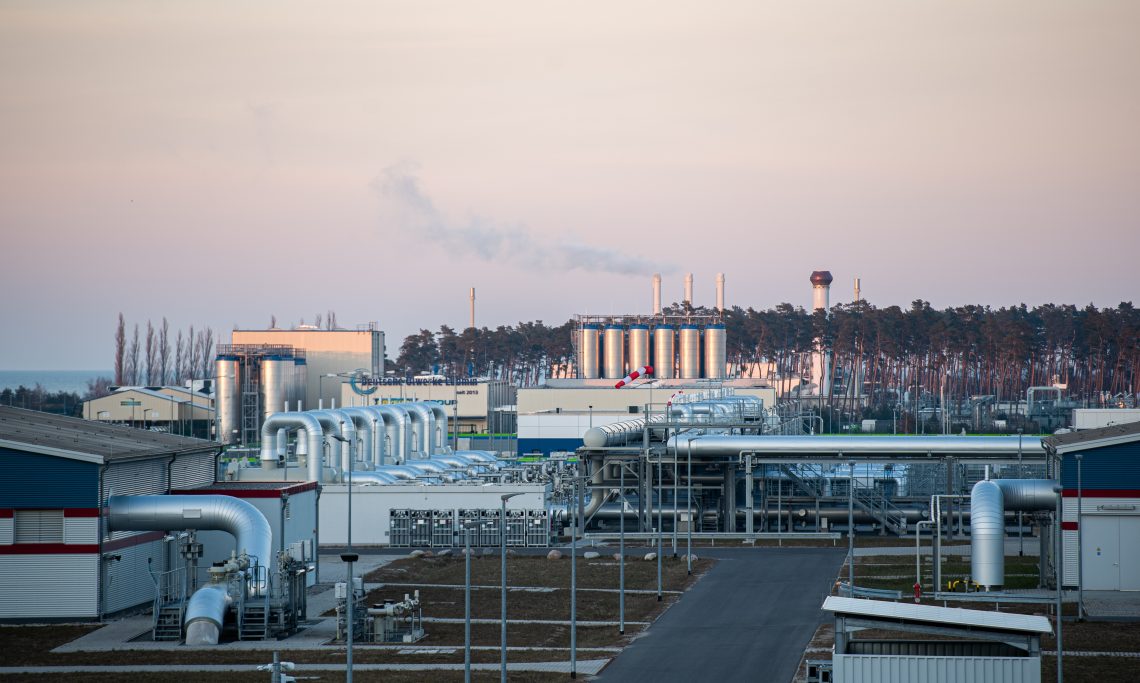The energy divide between Germany and France
Until the golden age of renewables arrives, France and Germany have taken conflicting stances on energy sources needed for the transition period.

In a nutshell
- The war in Ukraine highlights the dangers of reliance on Russian energy
- Germany, France are going opposite ways on nuclear energy
- Renewable transition problems create energy security risks
Germany and France have very different views on energy. Both approaches bring their own risks to European security.
While the ongoing German energy transition known as Energiewende focuses on developing renewables, Berlin has chosen to rely heavily on natural gas and coal during a transition period while phasing out nuclear energy altogether this year.
In sharp contrast, France is sticking with nuclear power, even triggering an intense debate across the Rhine River over whether carbon-free nuclear electricity generation can be classified as green energy considering it creates permanent radioactive waste.
Beyond inherent environmental concerns in these technological choices lies a serious geopolitical energy divide exacerbated by Russia’s war on Ukraine.
Cost-benefit analyses
Many factors go into a nation’s cost-benefit analysis of what types of energy to rely on, especially since electricity is not easily stored with the current state of technology.
One factor is known as “dispatchability” – whether an energy source can quickly and reliably meet power demand. Wind and solar have low dispatchability, and their intermittent nature risks blackouts, requiring more reliable sources of electricity to take over when there is no wind or solar. Sources with high dispatchability include nuclear energy and, to varying degrees, electricity generated from oil, coal and natural gas. Moreover, connecting low-dispatchable renewables to electrical grids is a complicated task.
Other considerations are the quantity, availability and cost of inputs – such as coal, fuel or uranium – and the physical space required for solar or wind farms, whether on land or offshore. Nuclear power again provides advantages: even when factoring in uranium needs, this source is typically less input-intensive.
Another factor is the environmental damage caused by resource extraction and energy production. The effects can spoil water quality, create toxic or nuclear waste, and generate planet-warming CO2. Solar and wind power generation emits no CO2 but requires much of it in the construction phase, as is the case with nuclear power plants. The biggest problem with nuclear-generated electricity is long-term radioactive waste management. Safety, however, is evolving in atomic energy. Newer generations of reactors promise to be virtually accident-free, but the same cannot be said for the slightly riskier older ones.
Europe gets most of its oil and natural gas from foreign sources.
Another factor is geopolitical, as nations seek to minimize dependence on unstable or unfriendly regimes.
Today, Europe gets most of its oil and natural gas from foreign sources. The war in Ukraine has exposed the dangers of Germany’s heavy reliance on Russian hydrocarbon fuels. Nuclear power seems to be the safer option to avoid such traps.
Cost and speed of construction are final factors. Nuclear power is very capital intensive and requires a long-term strategy, while renewables such as wind or solar have the short-term advantage, despite the need for requiring grid adaptation.
Rise and fall
French experts have long criticized the German Energiewende for its nuclear phobia, considering all the factors. From the French perspective, the nation’s civilian nuclear program is its energy trump card. In March 1974, French Prime Minister Pierre Messmer announced a plan to intensify the development of nuclear energy rapidly. The idea was to reduce French dependence on oil after the first oil shock of October 1973. The program led to the construction of dozens of reactors (56 to this day) over a period of 15 years, evenly distributed across the country.
In the late 2000s, politicians tried to revive the sector. In 2008, French President Nicolas Sarkozy and Prime Minister Francois Fillon launched France Nucleaire International to develop markets abroad and possibly promote nuclear CO2-free solutions. A European energy policy based on French technology offered several other advantages: reducing European dependence on Russian gas, distancing Germany from Russia, and greater geopolitical leverage for the Grande Nation (and probably a few bribes).
However, two events put an end to the strategy: the 2011 Fukushima catastrophe and Germany’s subsequent nuclear phaseout. Accelerating the declining trend were disappointments with two EPRs (third-generation European pressurized water reactors) – the Olkiluoto 3 in Finland and Hinkley Point 3 in the United Kingdom – as well as the debacles of the French uranium specialist Areva.
French weathercocks
The French nuclear sector also suffered from politicians being seduced by renewables. While France had roughly 80 percent of nuclear generation in its electricity mix, the 2015 law on energy transition for a green growth planned to reduce nuclear to 50 percent (through the closing down of 14 reactors until 2035), following President Francois Hollande’s campaign pledge in 2012.
To some extent, President Emmanuel Macron also contributed to weakening the French nuclear sector. When he was minister of the economy in the mid-2010s, the energy division of France’s Alstom was sold to General Electric. As president, Mr. Macron confirmed his predecessor’s choice of reducing nuclear power’s share of France’s energy supply. Under his aegis, the Atomic Energy Center stopped the prototype of the fourth-generation reactor Astrid, which could have “closed the nuclear loop” by recycling nuclear waste. He closed the old Fessenheim plant against the advice of the nuclear safety agency. As recently as a year ago, his cabinet did not see the need to order new reactors before 2023.
One big drawback for the industry today is that the lack of sales abroad (despite EPRs) and the absence of renewing earlier French power stations naturally weakened expertise for lack of practical training. Older engineers retired and their successors lack a vital set of “hands-on” technological knowledge.
Farce competition
But there is worse. The historic French state-owned electricity operator EDF (Electricite de France), which manages nuclear power plants, is on the verge of bankruptcy. There are many reasons for this situation. Just like Areva, mismanagement has contributed to EDF’s precarious financial situation. However, a bigger culprit though is that, in the context of European rules, a weird type of competition was introduced to EDF’s market in the early 2000s.
The arrangement favored EDF competitors even if they did not produce anything. They received guaranteed access to part of EDF’s “cheap” energy of 100 TWh (terawatt-hour) yearly, at 42 euros per MWh (megawatt-hour), that they could then sell to customers. It was a subsidy that EDF competitors profiteered from, supposedly to give them time, until 2025, to create production facilities.
Except that with increasing demand, these competitors exceeded their 100 TWh share of EDF’s power. They had to get supply elsewhere, from energy markets where prices are much higher (60 euros at the time, but then gradually above 200 euros), endangering their profitability. In 2018, EDF was asked to share even more, from a quarter to one-third of its production, to save the competitors the money-losing company was subsidizing. EDF refused.
President Emmanuel Macron recently announced plans for a significant expansion of nuclear energy.
Given the unfolding catastrophe, and probably because of this year’s presidential election, the French government in January 2022 forced EDF to increase its share to competitors by 20 TWh (at a higher rate of 46 euros per MWh, though). EDF must also take back the customers of failed competitors and find electricity on the market to supply its customers at prices four times its own. The bill is now a staggering 8 billion euros that the government is forcing EDF to pay (but the government owns 85 percent of EDF equity, which means the French taxpayer will have to foot the bill of a capital increase).
Future cracks
Making matters worse, micro-cracks in the safety injection circuits have been detected in its four big EDF nuclear power plants that had to be shut down. Similar defects have also been found on another reactor, meaning that 19 more similar reactors may have the same issue. With nearly a third of its reactors having problems, much less electricity could be produced. The financial impact would be catastrophic for the company and the energy security in France and throughout Europe.
In an apparent change of heart, President Macron recently announced plans for a major expansion of nuclear energy. The plans include developing small modular reactors and constructing six new-generation EPRs by 2040. But given years of incoherent choices and mismanagement, financial woes and declining competencies, the French transition faces serious difficulties that will delight wind turbine and solar panel competitors.
However, renewables will mean more expensive, more intermittent and less secure energy. The geopolitical price is high, too: French experts resent that Germany has played the card of Russian gas and Chinese production for solar panels and wind farms for its transition.

Scenarios
The war in Ukraine and the likelihood of a closer Sino-Russian alliance have aroused a sense of Europeanness. The Nord Stream 2 project has been suspended, even as port terminals to welcome U.S. liquified natural gas are not ready. German Minister of Economic Affairs and Climate Action Robert Habeck of the Green Party even said he would not reject the idea of postponing the total phaseout of nuclear power plants planned this year.
Thus, one possible scenario is a Franco-German rapprochement on energy. But in any case, with energy transitions on both sides of the Rhine in jeopardy for different reasons, the energy security of a big chunk of Europe, with a combined population of more than 150 million people, is seriously worrying.



